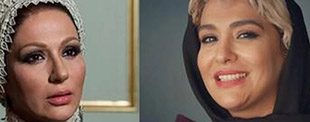Kobra Amin Saeedi, widely known by her artistic pseudonym Shahrazad, was a groundbreaking figure in Iranian culture, renowned for her multi-dimensional contributions as an actress, poet, filmmaker, and writer. Born on December 18, 1950 (1329 in the Iranian calendar), Shahrazad made her name at a time when societal norms in Iran were restrictive, especially for women. Her journey from a dancer in Tehran’s cafés to becoming a significant filmmaker and poet is a testament to her defiance against societal expectations and her unwavering passion for artistic expression.
This article will delve deep into the life and work of Kobra Amin Saeedi, exploring her rise in the Iranian cinema, her poetry, her transition into filmmaking, and her lasting legacy on Persian culture. In the process, we will uncover the remarkable influence she wielded in the domains of feminism, film, and literature.
Shahrazad’s Early Life and Career in Lalezar’s Café Scene
Kobra Amin Saeedi was born in the heart of Tehran, into a society that, despite its rich cultural history, placed considerable restrictions on women’s roles, particularly in the arts. At a young age, she began her artistic journey by performing as a dancer in the cafés of Lalezar Street, a cultural hub in Tehran that was home to many artists, writers, and performers. Lalezar was considered Tehran’s Broadway during the mid-20th century, and the vibrant entertainment scene offered a platform for many aspiring artists.
Despite the limited opportunities available to women at the time, Saeedi’s performances as a dancer brought her recognition. It was in 1969 (1348 in the Iranian calendar) that she adopted the name Shahrazad, after the legendary storyteller of One Thousand and One Nights, an alias that perfectly suited her storytelling abilities. She soon landed her first major role as Soheila Ferdous, a dancer, in Qaisar, a film directed by the prominent filmmaker Masoud Kimiyai. Her performance in Qaisar marked the beginning of her journey in Iranian cinema, though initially, her roles were limited to minor characters or those of dancers and villains.

